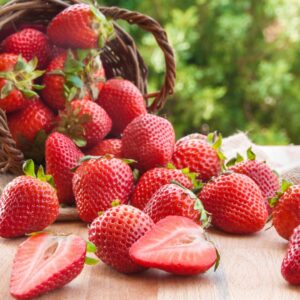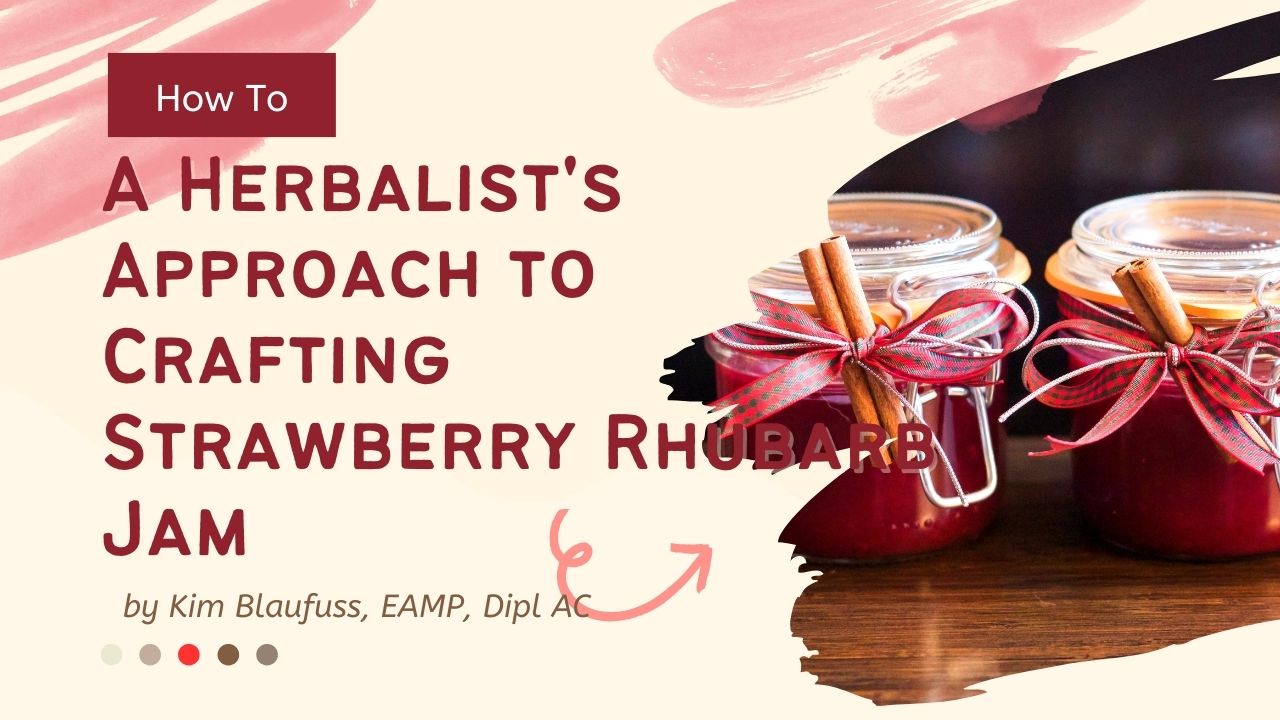With the fair on the horizon, I embarked on a quest to create a unique jam recipe for the canning division. After experimenting with various strawberry blends this summer, I stumbled upon a recipe that stands out. This unique jam is now my absolute favorite.
 My journey in recipe development is influenced by my background in Chinese Medicine and the art of blending Chinese Medicinal Herbal formulas. One of the key challenges I faced was balancing the light, uplifting taste of berries. I aimed to enhance this flavor profile, making the berry more favorable and comforting.
My journey in recipe development is influenced by my background in Chinese Medicine and the art of blending Chinese Medicinal Herbal formulas. One of the key challenges I faced was balancing the light, uplifting taste of berries. I aimed to enhance this flavor profile, making the berry more favorable and comforting.
I started with the wonderfully light strawberries that I was able to get at a local berry farm, Thoeny Farm, in Woodland, WA. By itself, strawberries are too light and are missing some of the bottom notes. I aimed to fill in the bottom portion of the berry to give it a more full-bodied taste. I picked the pungent lemon flavor of sumac which added a new dimension to the strawberries.
Strawberries and sumac, were the foundation. But, it wasn’t enough. I needed something more.
The bitter flavor of rhubarb goes so well with strawberries. The two blend like good friends, and the tartness of the rhubarb lends a slight bite that highlights the sweetness of the strawberry. I was able to use my own homegrown rhubarb.
The strawberries, sumac, and rhubarb were a nice blend of sweet, pungent, and bitter. Yet, I thought the jam could be improved with adding the last two flavors of the five elements in Chinese Medicinal theory: acrid and sour.
I found the acrid flavor in the the slightly peppery flavor of ginger. Azure Standard delivered organic ginger to my local drop ship. The last flavor was sour which I found in fresh lemon.
I balanced the flavors against each other so that the five elements were in balance. In the end, this blend had a surprisingly bright flavor without emptiness.
I like doing small batches. If I don’t like the batch, it isn’t like I used all my berries! This recipe will make 3.5 to 4 pints.
Ingredients:
2 cups rhubarb
1 cup white sugar
1/2 box low-sugar pectin
1 tsp sumac
2 tbsp of fresh lemon juice
2 oz or 56 g of fresh ginger (about 3inch by 1 inch root)
Instructions:
Chop the strawberries and rhubarb. Place all the ingredients in a pot.
Peel the ginger and take it through a garlic press to macerate it. Macerate it over the pot so you don’t lose any ginger juice.
Patience is key in the cooking process. I boil the ingredients slowly, on a low heat, for an hour with intermittent stirring. This slow and steady approach ensures the flavors are fully developed and the jam reaches the perfect consistency.
After 30 minutes, I start checking the thickness of the jam by watching how easily it drips off the spoon. It will slide off the spoon with the thickness of syrup instead of water.
I like a slightly loose, thick jam. The jam will thicken up as it cools. A syrup look to your jam should cool to a great consistency.
Water Bath:
I have always done water baths, and I start boiling my jars and lids after about 40 minutes of processing the ingredients. That ensures my jars are ready when the jam is.
After filling the jars, I return them to the water bath for at least 5 minutes, but usually 10 minutes. The extra time doesn’t damage the jams and helps with my OCD.
Afterward, I turn off the stove and let the jars sit for 5 minutes before pulling them from the water bath and setting them on the counter. Over the next hour, the lids will pop as they seal themselves. I’ll check the next day to ensure they all popped and are sealed.
I’ve never had my jars not seal. But, if a jar doesn’t seal, use it immediately and store it in the refrigerator.
References:
 Ginger is an interesting herb. It is great for digestion, pulling toxins out of the body, and warming you up if you run cold. The problem is that too much ginger can cause heartburn. Rhubarb can offset the tendency of ginger to be too warm. Rhubarb is great for moving toxins out of the body and cooling the body.
Ginger is an interesting herb. It is great for digestion, pulling toxins out of the body, and warming you up if you run cold. The problem is that too much ginger can cause heartburn. Rhubarb can offset the tendency of ginger to be too warm. Rhubarb is great for moving toxins out of the body and cooling the body.
I was having trouble figuring out how much ginger to use in this recipe, so I looked at how much ginger other people were using.
The recipe below highlighted the rhubarb instead of the strawberries. I highlighted strawberries in my recipe. Yet, the recipe gave me some direction on how to mix ginger against rhubarb. The confectioner of the recipe uses about 3/4 oz or 21 grams of ginger to a cup of rhubarb. Her recipe uses about 3x’s as much sugar as I do. Sugar is highly inflammatory and creates excess heat in the body. Because I’m using so much less sugar, I thought I could increase the amount of ginger I was using. And because my recipe was so much lower in sugar, the healing properties of the ginger and rhubarb would take center stage instead of the inflammatory properties of sugar.
Rhubarb Strawberry and Ginger Jam
Good luck with your canning and your health!


